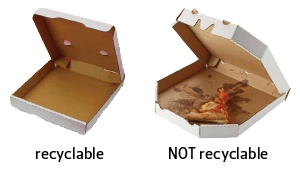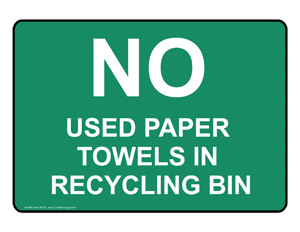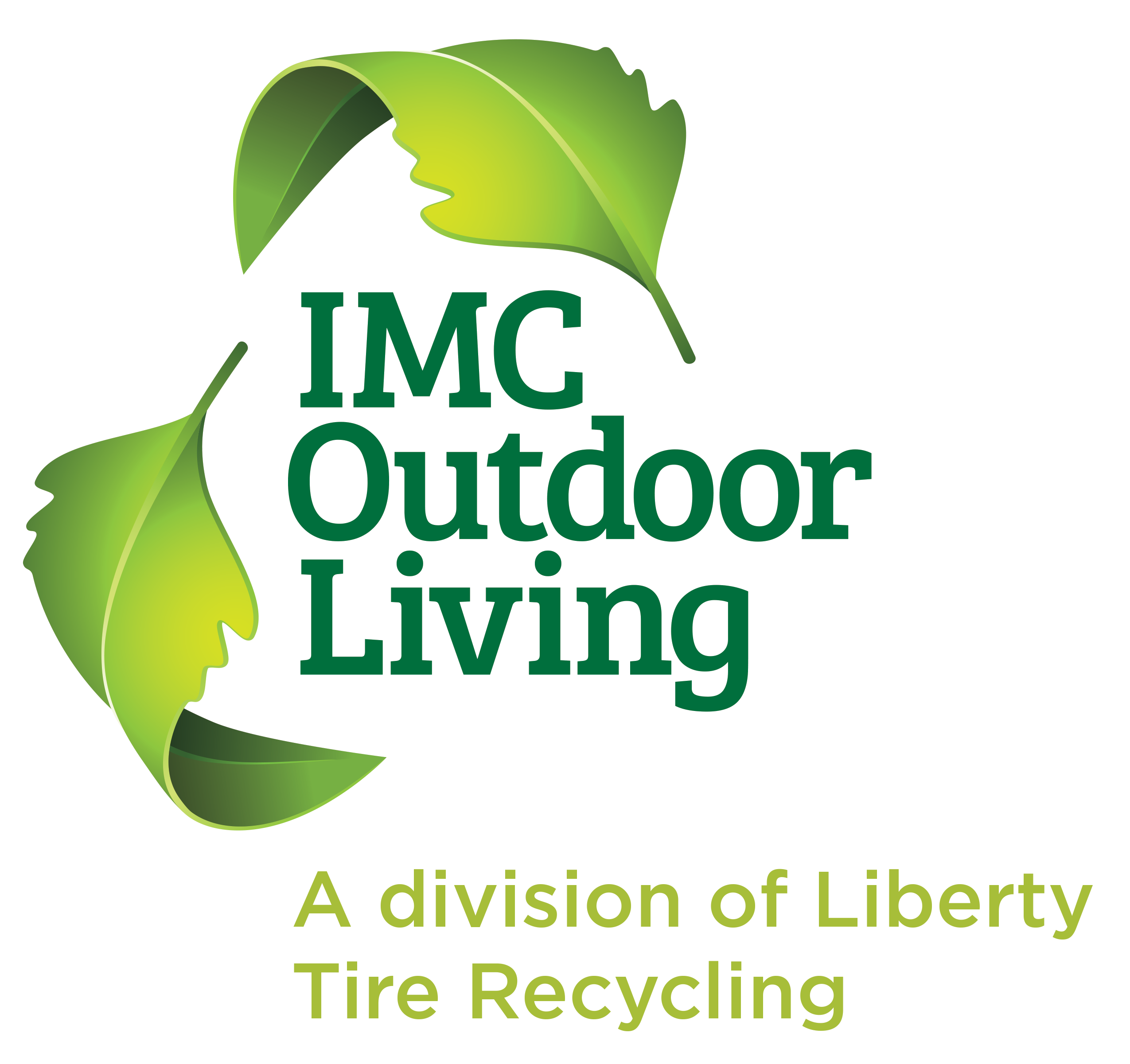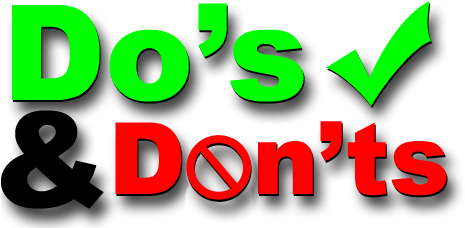Last year Americans generated about 251 million tons of trash and recycled and composted almost 87 million tons of this material, equivalent to a 34.5 percent recycling rate. Not horrible, but I know that we can do better in the years to come.

Recycling keeps junk out of landfills and helps preserve America’s natural beauty. Simply sorting plastic bottles, glass jars and aluminum cans from your trash can really make a difference in the amount of garbage piling up across the country. While many of us are catching on to this movement, sometimes we can be a bit overzealous with what we place in our recycling bin. Sometimes looks can be deceiving so I decided to put together a list of things that you should not recycle. This list may help you make some informed decisions on what you purchase in the future.
1. Pizza boxes
Since pizza boxes are made of cardboard, it seems logical to throw the empty box into the recycling bin. But, in most cases these boxes should head straight to the trash. The grease and food waste soaked up by the cardboard make pizza boxes a mess to recycle. In fact, paper fibers can’t separate from the oily pizza box and can ruin the entire recycled cardboard batch.

2. Juice boxes
Another type of cardboard that should go straight to your trash is juice boxes. These are often coated in so much plastic they are rendered unsuitable for recycling. However, it is possible to find some juice boxes specially designed for recycling. Check the packaging or call your local recycling plant to find out what type of juice boxes you can recycle.
3. Wet paper
Paper is paper, right? And we all know that paper should be recycled. However, it’s not all created equal. Wet paper, for example, is not recyclable and should be thrown in the garbage can instead of the recycling bin. Its fibers are shorter, making them less valuable. In addition, wet paper is at risk for contamination and many collection agencies won’t take it.
4. Paper towels or napkins
Just like pizza boxes, food contamination leaves paper towels and napkins unrecyclable. To cut back on your paper waste, use dishtowels or cloth napkins instead. These can be washed and reused over and over again.

5. Household hazardous waste
It may seem obvious to avoid throwing items that are harmful to the environment, such as motor oil or antifreeze, in your recycling bin. But you may not realize that basic supplies fall under the category of hazardous as well. Batteries, light bulbs, aerosol sprays and paint cans should never be placed in your recycling bin. Most facilities don’t have the capacity to take these items. However, there are a few special collection locations that can take these items and dispose of them properly.
6. Ceramics
Ceramic dishes, such as a coffee mug, can’t be taken to the recycling plant. This material does not melt, therefore, it can’t be made into something new. Instead, think of ways you can upcycle ceramics. An old coffee mug can become a new planter or a broken plate can be used in a mosaic.
7. Plastic bottle caps
When you go to recycle plastic bottles, make sure you remove the cap. The bottles and the caps are made of different kinds of plastic. While the bottles are easily recyclable, only a select few special collection agencies will accept bottle caps, which are made out of polypropylene, or plastic #5. In addition, leaving the cap on the bottle can cause a safety hazard at the sorting facility. As plastic bottles are crushed, the pressure causes the caps to shoot off and put employees in danger.
8. Styrofoam
From disposable cups to packing peanuts, Styrofoam is widely used throughout the world. But it’s not recyclable at most collection locations. The material is difficult to store because of its bulk and it must be kept separate from other forms of plastic. But throwing the substance away isn’t a good alternative either. According to the U.S. Environmental Protection Agency, it takes more than 500 years for a Styrofoam cup to degrade! This type of foam plastic should be avoided whenever possible, but if you find yourself with a supply of Styrofoam, try and reuse it.

9. Electronics
There are always new electronics on the market. When you upgrade to the latest cell phone or you purchase a new monstrous television, it’s important to think about recycling your old electronics. Most recycling locations don’t accept electronics, but there are special collection sites that will take your old devices. You might also consider selling your unused electronics or donating them to charity.
10. Bright colored paper
Recycled paper is heat treated to release the paper fibers. However, heavily dyed paper will also release its color. Basically, it will have the same effect as washing a red shirt with your white laundry — the color is altered. Bright paper should be reused or thrown in the garbage can.

